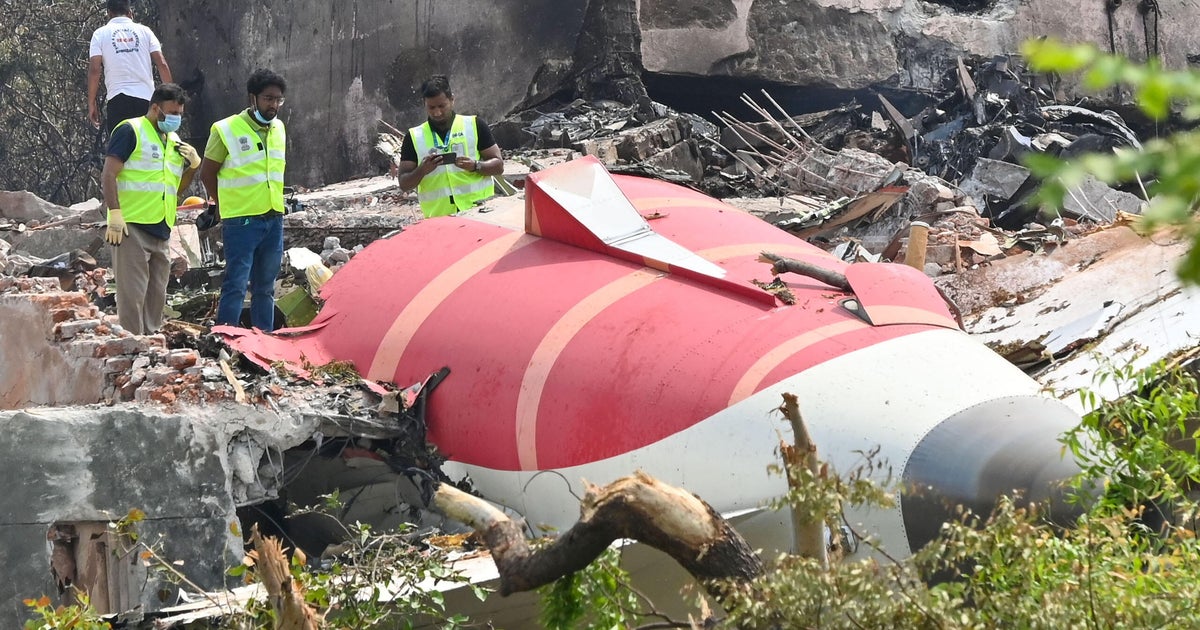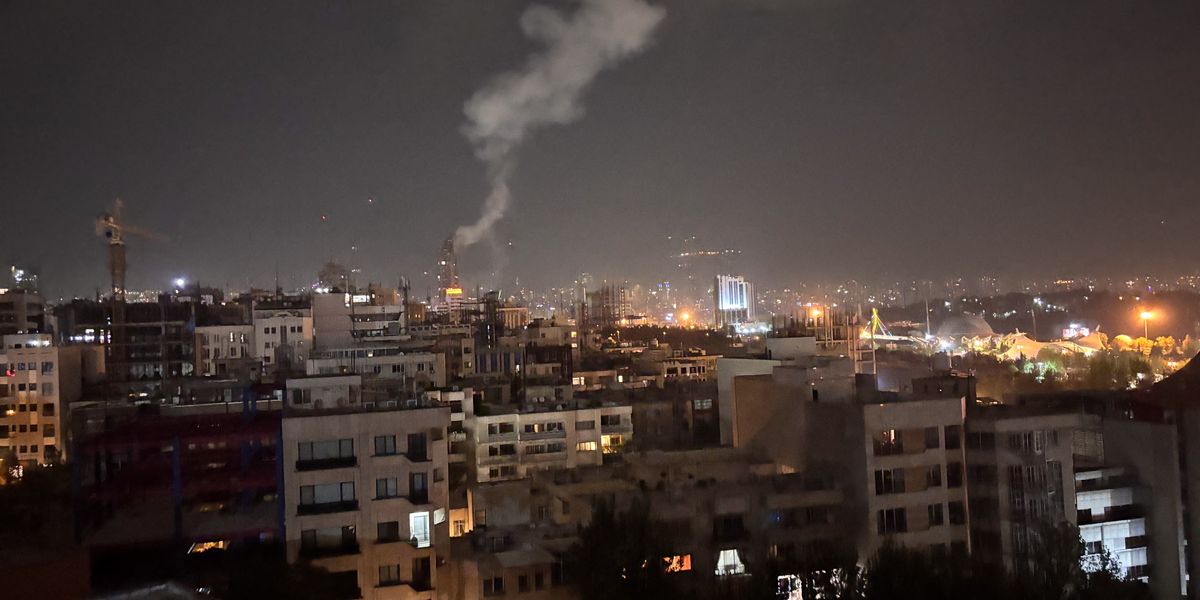On the road to the ancient city of Aleppo, a 5,000-year-old landmark shattered by war, a landscape of destruction stretches as far as the eye can see.
Our journey was supposed to start at Damascus airport – until the Israel-Iran war closed off Syria’s airspace. Instead, we entered the country from the north, the starting point of the rebel onslaught that culminated in the collapse of the Assad regime seven months ago.

Here and there, cinder blocks laid in front of ruined buildings indicate that reconstruction has begun – tentative signs of a new dawn for a country yearning for peace and stability after 14 years of a gruesome civil war.
Hopes for a new beginning received a welcome boost earlier this month when Washington said it was lifting most of its sanctions on Syria, paving the way for the return of the critical foreign investment needed to get the country back on its feet.
In the ruins of Aleppo
Syria's transitional government has been grappling with bouts of sectarian violence that have threatened to derail the country’s transition after decades of brutal rule by the Assad clan.
Interim President Ahmed al-Sharaa has vowed to protect Syria’s mosaic of ethnic minorities, particularly in the wake of March massacres in the Alawite community’s northwestern heartland and clashes involving armed groups and Druze militias in the south.
Read more'Syrian above all': The Alawite community refuses to pay for Assad's crimes
In the Aleppo region, the authorities are also faced with a Sunni majority split between supporters of the former rebels who toppled Assad and groups that were previously loyal to the deposed regime.

A symbol of this fragile balance is the tense relationship with members of the tribal militia Liwa al-Baqir – former Assad loyalists who switched to the rebel side and harboured a special unit of al-Sharaa's HTS rebel group, helping to precipitate the capture of Aleppo and open the route to Damascus.
Seven months on, Bakara tribesmen who were part of the militia feel they have not reaped sufficient rewards from their alliance with Syria’s new masters.
Meanwhile, Aleppo’s Ashrafieh and Sheikh Maqsood districts remain in the hands of the Kurdish YPG militia, which has carved out a de facto autonomous region covering swaths of northeastern Syria.
Both neighbourhoods were supposed to return to government control under a March agreement to integrate Kurdish military and civilian institutions in the Syrian state – but the landmark deal is yet to take concrete form.
The tunnels of Manbij
East of Aleppo lie the fortifications of Manbij, a former stronghold of the Islamic State (IS) group that was taken by the Kurdish-led and US-backed Syrian Democratic Forces (SDF) and then captured in December by Syrian rebels with support from the Turkish army.
A network of tunnels winds beneath the city, some large enough for vehicles to drive through. Entrances to the tunnels, closed off by metal doors, are still visible in the city's military hospital, which was used as headquarters by both the IS group and the Kurdish YPG.

On the higher ground west of Manbij, clearing work has begun at the site of a private university shattered by fighting, a sign of hope for residents determined to rebuild their city.
But the challenges are immense in this strategic hub plagued by drug trafficking and hit by a series of terrorist attacks.
In February, a car bomb killed at least fifteen people, most of them women, in the eighth such attack since Assad’s fall. Residents we spoke to blamed the YPG, amid suspicions its hardline wing is aiming to derail the city’s return to government rule.
One thing is certain. Manbij’s woes are a foretaste of the huge difficulties Syria’s new rulers are bound to face in the Kurdish-dominated northeast if they fail to reach – and then enforce – a lasting political settlement with the YPG.
Homs and Damascus on edge
Further south, the city of Homs is another powder keg, riven by sectarian tensions, kidnappings and vendettas. Around 60 Alawite women have been abducted in recent months in the area stretching between Homs and the Syrian coast, according to our sources.
Homs has also been roiled by a high number of homicides linked to social media campaigns targeting former Assad loyalists. In response, the government has stepped up its arrests of former regime members, aiming to bring them to justice and prevent private vendettas.
Read moreSyria undertakes daunting task of documenting scale of the Assad regime’s crimes
Our arrival in the capital Damascus on June 22 coincided with a suicide bombing at the Greek Orthodox Church of Mar Elias in the Dweila neighbourhood, in which 25 people were killed and dozens more were injured. The attack – later claimed by a little-known Sunni extremist group that the authorities said was linked to the IS group – sowed terror among Syria’s Christians and undermined trust in the country’s interim government.

At a funeral for nine of the victims, the Greek Orthodox Patriarchate of Antioch and all the East, John X, denounced an “unacceptable massacre” and criticised the authorities, calling on them to “assume full responsibility”. His comments were broadcast uncensored on Syrian television.
Palmyra, the ransacked desert jewel
The treacherous road to Palmyra takes us deep into the Syrian desert under blistering temperatures of 45 degrees Celsius. On the side of the road, the charred remains of a Russian-made T-72 tank bear witness to the fierce fighting that took place over the years between rebel groups, regime forces and the IS group. Railway tracks point to the coveted mineral resources, particularly phosphate, that they fought over throughout the war.
Danger still lurks in this region, where IS group fighters continue to roam. We are told that many jihadists moved to nearby towns and cities once the Assad regime fell, blending in with the local population to avoid air strikes by the US and their allies or to plot future attacks.
The desert finally gives way to the lush oasis of Palmyra, the ancient Roman city of palms, still a breathtaking site despite the severe damage incurred from IS group vandalism and Russian air strikes. Before the start of Syria’s civil war in 2011, more than 150,000 visitors made the trip each year to admire this UNESCO world heritage site.

The nearby modern town, home to the notorious Tadmor prison, lies in ruins. As with the infamous Sednaya prison north of Damascus, built close to one of the world’s oldest Christian monasteries, one cannot help but remark on the shocking proximity between Syria’s most celebrated cultural landmarks and the Assad regime’s most sinister jails – as if the Assad clan had wanted to make visitors from around the world accomplices in their crimes.
Read moreSeven years of torture by Assad’s executioners: ‘I will never forgive them’
In Deir ez-Zor, life after the war
Since the fall of Assad, no foreign journalist had set foot in Deir ez-Zor, in Syria's far east. On the road leading to the city, we meet a long line of trucks carrying humanitarian aid from neighbouring Iraq. After a decade of deadly fighting that destroyed almost 90 percent of its buildings, the city on the banks of the Euphrates is a shadow of its former self.
The fall of the regime was followed by three days of looting and a brief occupation by Kurdish YPG forces. Today, the once-prosperous farming hub has just 154,000 inhabitants, just over half of its pre-war population. Paradoxically, rents are very high due to the lack of habitable dwellings.
Deir ez-Zor was once famous for its bridges over the Euphrates, notably a suspension bridge built in the late 1920s during France’s Syrian mandate. But nothing remains of these structures, which were destroyed by the warring parties. To cross the river, residents now rely on a makeshift bridge made of rubble and on barges for heavier loads.

Towards the end of the day, when the heat becomes less stifling, many locals take a refreshing dip in the Euphrates, while others sit for a cold drink on the banks of the river or on floating cafés with music on loudspeakers. They're a sign that life goes on in Syria, despite the open wounds left by war.
This article was adapted from the French original by Benjamin Dodman.











 English (US) ·
English (US) ·